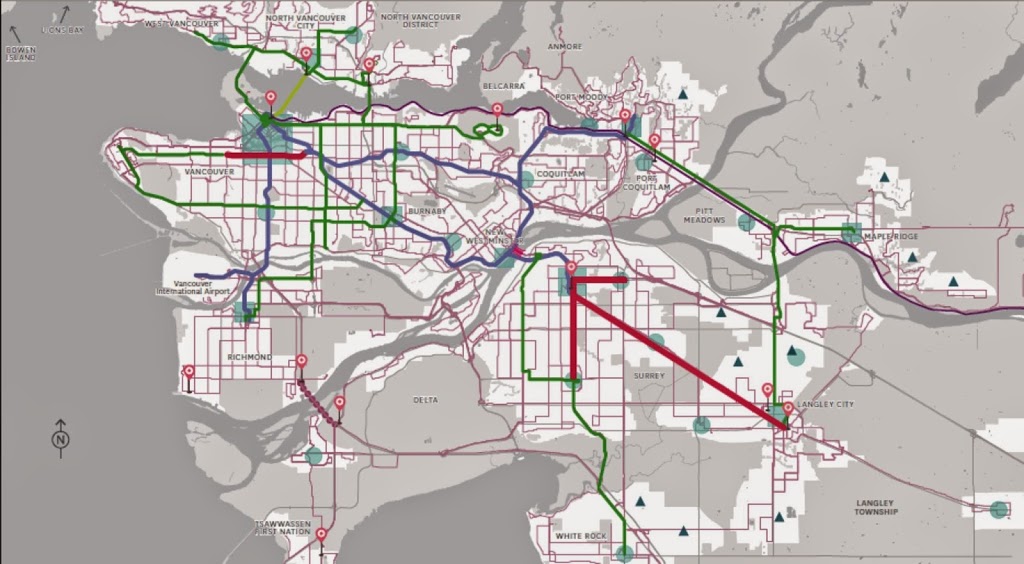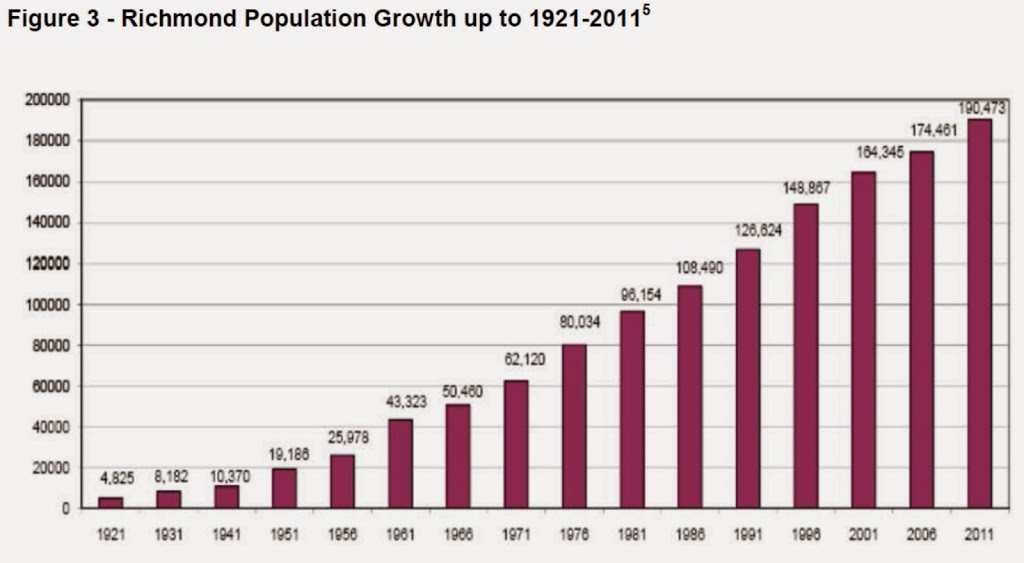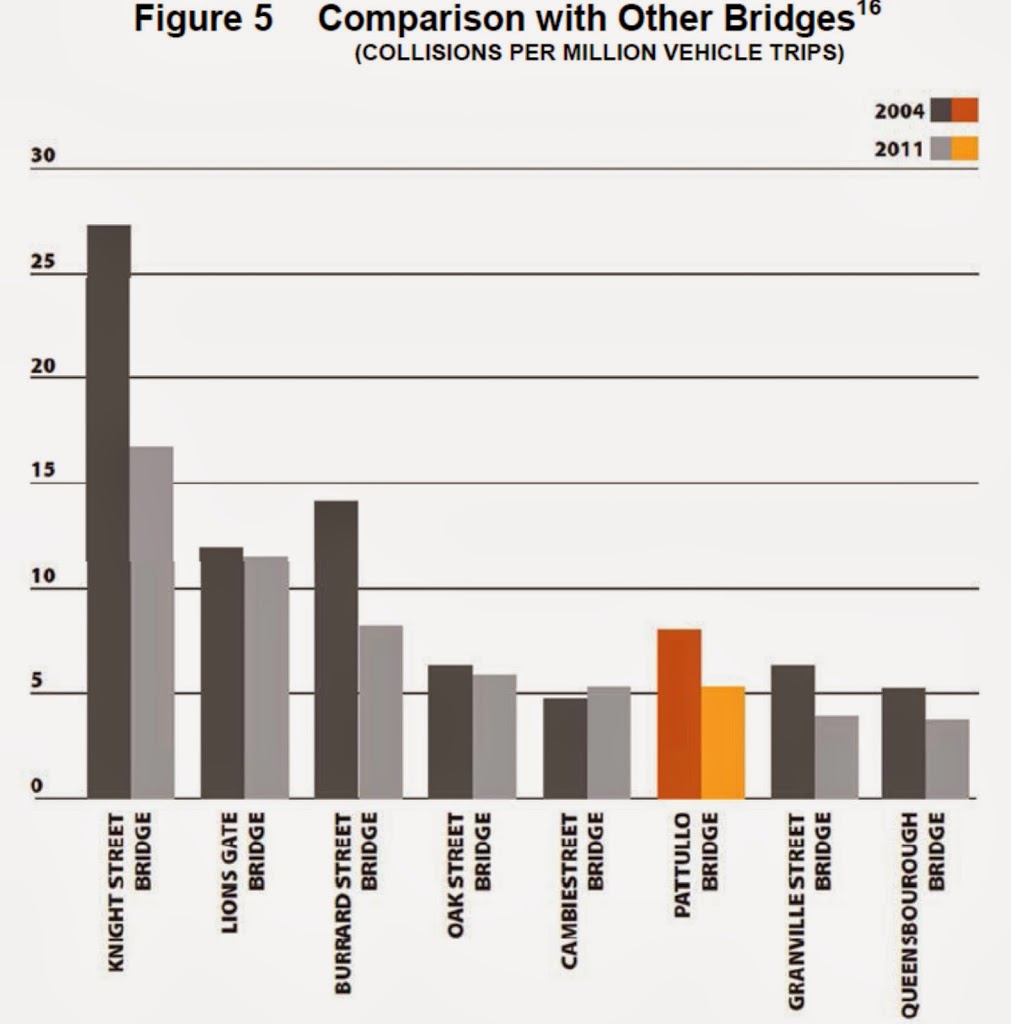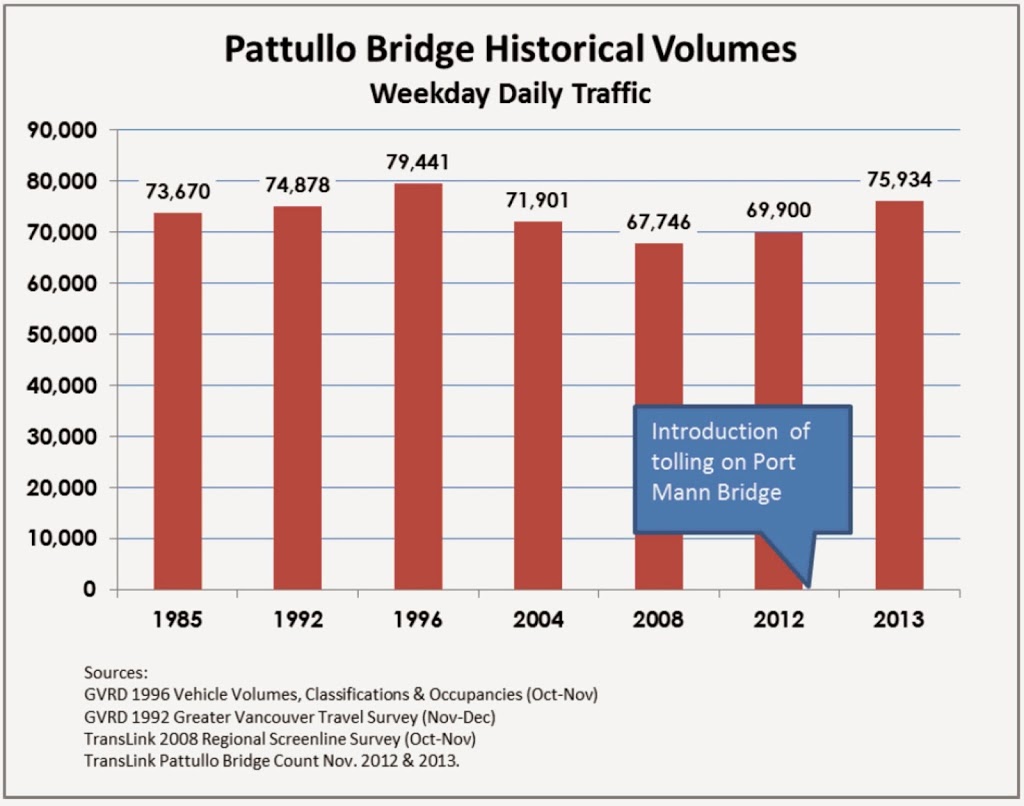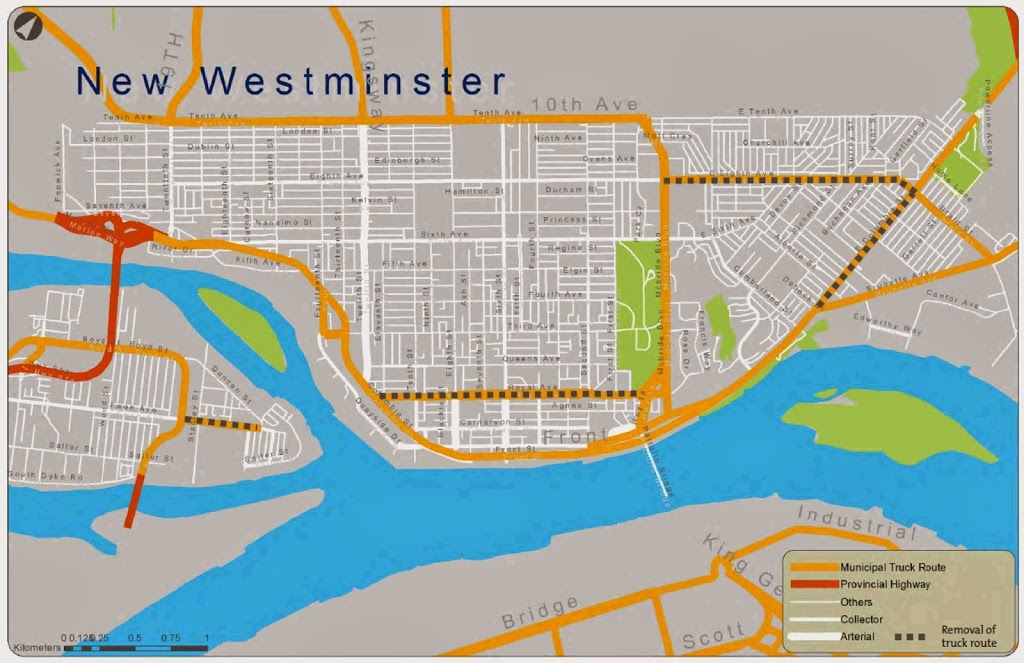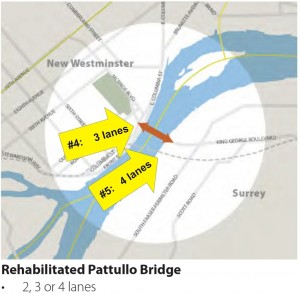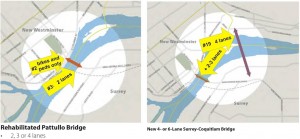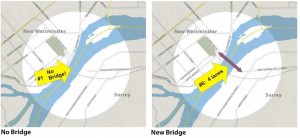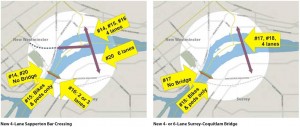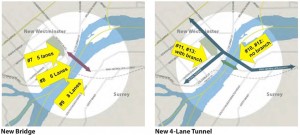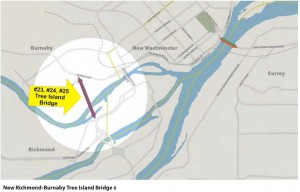The Mayors of the region have done what no-one (and I include the Minister of Transportation in this group) thought they could: they came to a consensus around a 10+ year transportation plan. For a moment in time Thursday morning, people around the region started to dream about a rational transportation future… then the Minister reminded us that he wasn’t interested in solving the transportation problem, he wanted to perpetuate the contrived impasse. Alas…
First the good news: the plan looks good. The major components show a significant amount of compromise by many of the Mayors, as a few big dreams have been scaled back somewhat. However the route charted is clear: Rapid transit in the form of underground Skytrain on the Broadway corridor and two light rail lines in Surrey. A whole swack of B-line routes for everyone else. Investment in the SeaBus, a few shekels tossed to pedestrian and cycling infrastructure, and yes- a tolled 4-lane Pattullo Bridge.
Surrey LRT: Three lines total, 104 Ave and King George Boulevard running within 7 years, and the Fraser Highway line in service by year 12.
Broadway Corridor: Continuation of the Millennium Line to Arbutus within 10 years.
Skytrain: improvements to the system to increase frequency of Skytrain by 2016.
Burnaby Mountain Gondola: They are calling it a “connection” to avoid discussing technology, but the business case for the gondola is solid: it can move many more people for much less money with much more reliability than buses. There is no timeline provided for this investment.
SeaBus: An increase in SeaBus service by 50% will bring it close to a “Frequent Transit Service” standard, meaning waits for the next SeaBus will be reduced to the point where “Over Town” commuters don’t have the schedule your life around catching the next boat.
Pattullo Replacement: A tolled, 4-lane Pattullo is now the plan – although no date is provided for completion. The bridge will be “expandable” to 6 lanes, so the devil will clearly be in the details (for those who remember the Alex Fraser was built with two “spare” lanes that were opened about a year after opening). The language sounds to me like they are NOT trying to sneak in a 6-lane bridge:
“This possible expansion may be considered if need arises, if demand increases beyond forecasts and/or the surrounding network changes. Future consideration of expansion would require all-party agreement and Mayors’ Council approval.”
I read from that that New Westminster, being one of the parties, would need to agree, and with the toll in place, the odds of demand requiring more lanes any time soon are pretty small. I call this a win for the “Reasonable Approach” work that New Westminster Council has been doing for the last year. This was the part of the Mayor’s Plan I was most concerned about before it was unveiled, and I’m glad to see it is something I can vote for as part of the greater plan.
Roads: “…having benefited from many decades of high and consistent investment… no major road capacity increases are needed” -BOOM!
Pedestrians and Cycling: The Mayors support and call upon TransLink to strengthen the regional cycling network, and to invest in making the pedestrian connections to transit stronger. There are few specifics here, but the next time you hear about the great Bicycle Conspiracy/Agenda, note that only 3% of TransLink’s current budget will go to all of the cycling, pedestrian , road and bridge maintenance (yes, even truck and car roads), and the plan will bring that proportion up to… 3% (which is an increase, as it will be the same percentage of a slightly larger budget).
B-lines: 11 New B-line bus routes. These almost-express buses bridge the gap between light rail and old-style buses, by being frequent enough with limited stops to get a lot of people across medium-distances fairly efficiently. The advantages are that 200km of these lines can be installed with very little capital investment on the part of TransLink, but their effectiveness is tied to their being as fast as, or faster than, a car on the same route, which requires the individual Cities investing in supporting infrastructure (priority lanes, queue-jumper lights, etc.). More devil-in-detail stuff here.
Buses: More and newer buses will mean a better quality of service, and lower operating costs. The plan includes more than half a million more service hours per year, between the B-lines, peak load service, and off-peak service. This would support getting more people to the “core services” of rapid transit which will increase revenue. The plan proposes that by 2030, more than 60% of front doors in Greater Vancouver will be within walking distance of the Frequent Transit Network (the service that is frequent and reliable enough that you don’t need a schedule to depend on it, you can just walk to the stop and a bus will arrive within a few minutes). That gives pretty much the entire region a level of service approaching Burnaby levels, if not quite New Westminster levels. This is good, and will provide huge revenue increases through tickets.
There is a bunch of other stuff in there about transportation demand management, better integrated information and payment systems, upgrading the Goods Movement system, etc. This is a 45-page document full of good details; a well-referenced and integrated Regional Transportation Plan. It is simply amazing that TransLink and the Mayors were able to put it together so quickly, and find enough consensus on it to get it (almost) unanimously passed.
Reading it through, you can see how this happened. Overall, there are signs of compromise – a little of everything, not too much of any one thing – note the SkyTrain to UBC is not included, and the LRT access for Surrey is coming online slower than ideal. Make no mistake: this is actually a very modest plan compared to what our region should build if we want to be “world class”… but at least we are, for the first time in almost a decade, moving forward instead of backwards.
Well, we were, until Minister Stone killed it shortly after birth. This, once again, confuses exactly what his goal is. The Minister told the mayors to make a plan, they did it. He told them to set up a payment plan, and that (this is the important part) the populace would be able to vote on whether that plan was acceptable. No money unless the people agree. That was the deal.
Of course, he didn’t really want the people to vote, he wanted the Mayors to be forced to supplicate themselves in front of the public asking for more money…ideally during local elections. The tax plan the Mayor’s have proposed has suggested a re-jig of the Carbon Tax, which puts a load on general revenue , which the people are apparently not allowed to vote on.
This type of cynical politicking is why we can’t have nice things.
The hanging question, after a year of this discussion, is this: What is the BC Liberal Plan? So far they have offered nothing- no vision, no funding, no ideas, not even any creative criticism – they just say “No”. Leadership is not asking other people to come to you with proposals, then responding by saying “I think not, try again”. It is instead about finding the way to say “yes” to a better future – something the herd-of-cats Mayors’ Council have been able to do, but Todd Stone simply cannot abide.
Put this lack of leadership in contrast with Kathleen Wynne’s bold leadership on sustainable transportation in Ontario. Both of these unexpectedly-re-elected premiers call themselves “Liberals”, but they clearly have very different visions of what liberalism is, and different views of leadership.

